SpeakableCassie’s Top Ten Games of 2022! – Part 2
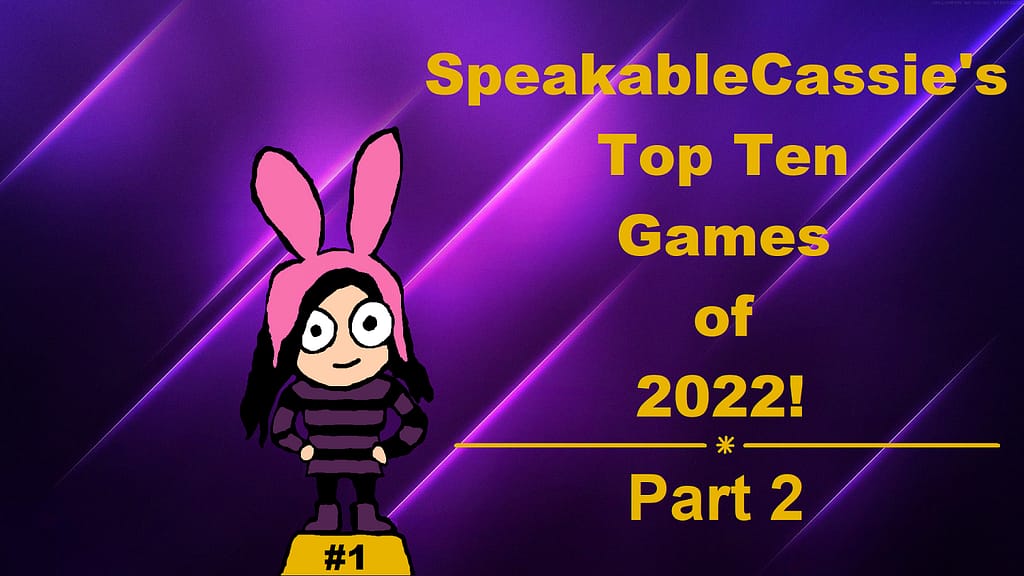
Welcome one and welcome all to the second part of my top ten games list for 2022! In the first part, we covered positions ten through six in my list, alongside three honourable mentions that may not have made the cut, but certainly deserved a shout-out of their own. We spoke of a wholesome indie puzzler, a traumatising AA walking sim, a AAA adventure that was not quite as horrifying as it first appeared, and many, many more truly captivating titles! If you’d like a recap, then be sure to check out that first part at this link, right here!
Before we dive into this second part, however, I’d like to take a brief moment to look back on some impactful losses within the gaming industry this past year.
Not very long ago, we had to say goodbye to the incredible Kevin Conroy, who sadly passed away on the 10th of November at age 66… Kevin was an incredibly talented voice actor with a number of awe-striking performances to his name, though most will know him for his renditions of Batman and Bruce Wayne within countless iterations of the DC universe. I will never forget how much love and passion he brought to the role —particularly throughout the Batman: Arkham video game series— but no matter where you may know him from:
He will assuredly be sorely missed.
Ryan Karazija, the founder and frontman of the hauntingly beautiful band Low Roar, also passed away this October at the age of 40. Having discovered his band thanks to the unforgettable soundtrack to Kojima Productions’ Death Stranding —a game like no other, which moved me to tears just about every time a Low Roar song began— this loss cut particularly deep… Though his ties to the gaming community were brief, he and his band impacted the lives of so many people with their impassioned and heartfelt performances. I hope that he too, is resting peacefully.
But Kevin and Ryan weren’t the only ones. Mohammad Fahmi, John Galt, Simon Hellwig, Billy Kametz, Kazuki Takahashi, Mike Fahey, and so many other people in and around the gaming industry have passed away since the start of 2022. As gamers, we often start and stop caring within the confines of the games themselves, forgetting about the real human beings who develop them, write them, animate them, QA test them, draw for them, act in them, and so on, so forth.
No game would be possible without the passion of the people who work tirelessly behind the scenes to bring us excellent titles all year round. So take a moment to remember those lost, and make sure to appreciate each and every one of them, listed here or otherwise…
Now, with that somber but necessary topic dealt with, it’s time to fill ourselves with positivity by resuming the countdown and seeing which titles made it into the remaining five positions of my top ten games of the year. There’s no ‘honourable mentions’ preamble to get through this time, though — just unadulterated Game of the Year themed joy!
Let’s begin, shall we?
5 – God of War: Ragnarök
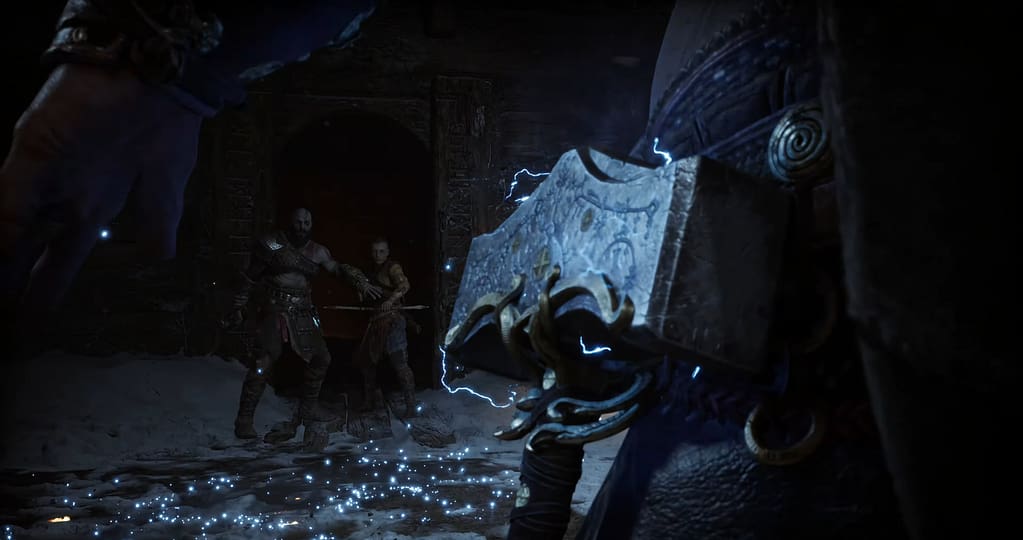
I have something of an unusual history with the God of War series. I’ve always been a fan of the spectacle fighter genre, yet I found very few opportunities throughout my youth to play through its best examples — often only experiencing it through standalone games whilst missing out on some of its biggest series. For example, I did fall in love with Dante’s Inferno, Marlow Briggs, Vanquish, NieR, and DmC: Devil May Cry, but at the same time I managed to completely miss out on God of War, Bayonetta, and the mainline Devil May Cry series…
Obviously, I endeavoured to get caught up with all of these franchises upon reaching adulthood, but God of War, in particular, felt like a special case to me. I’d heard rumours of Kratos’ big 2018 reboot into Norse mythology for quite some time, with absolutely no knowledge of what it was or how it worked. Was it a complete restart for the franchise? Did it continue the storyline from the original games in any way? Was it even a spectacle fighter anymore? I had so many questions, but upon seeing an excellent deal on the newly released title: I decided it would be best to seek out the answers for myself.
Yes, that’s right, I actually started God of War 2018 with absolutely no prior knowledge of Kratos as a character, without truly understanding the franchise that came before it. Truth be told: I loved it regardless! God of War 2018 was a whimsical masterpiece made up of both witty and mature storytelling, featuring a deeply gratifying combat system, numerous elaborate characters, some timelessly good voice acting performances, and graphics that blew me away in both style and fidelity.
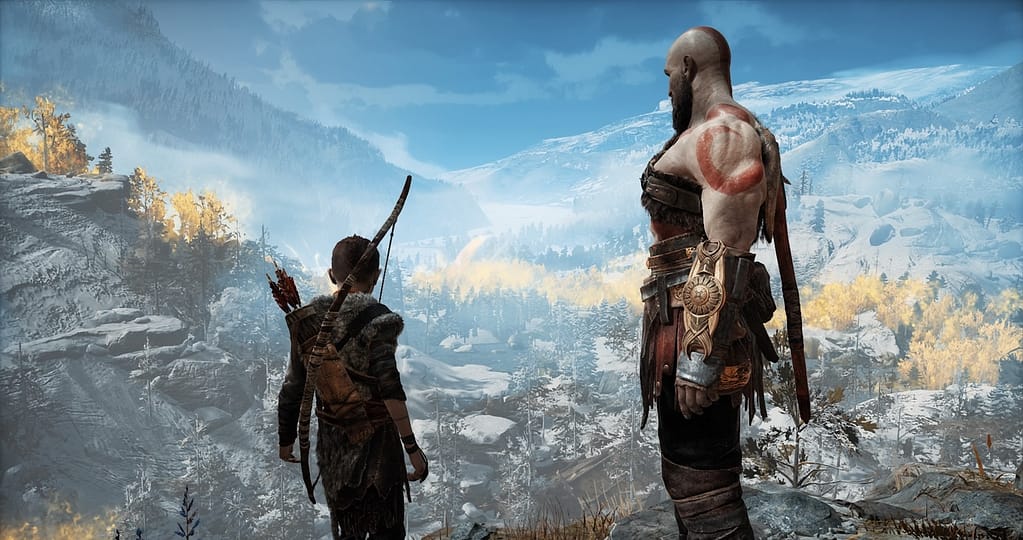
Whilst playing through it, I was on cloud nine and didn’t think anything could ever stand in the way of its enjoyability. That was, until, the halfway point of the game… I won’t be spoiling this particular God of War game here, of course, (though I do warn that significant spoilers for the original series will appear in the upcoming text), but suffice to say that as certain Gods and weapons from prior games became referenced more frequently, I started to feel completely lost. I could appreciate the depth behind each and every scene, but I simply couldn’t follow them, ultimately deciding to bring my playthrough to an end.
However, I now found myself filled with determination… Slowly but surely, I started to gather the series together. I attained some relatively rare copies of the PS3 God of War Collections, (Volumes 1 & 2), got a hold of the PS4 remaster for God of War 3, and found myself a copy of God of War: Ascension to round things off. Then, with the entire series now at my disposal, I began to binge through it all with my fiancée — a long-time fan of the series.
I watched in awe as Kratos confronted the Furies, killed the Dream God Morpheus, and lusted for revenge against Ares over the death of his wife and child. I observed, stunned, as he reunited with his brother Deimos in order to slay Thanatos, fought the Sisters of Fate themselves, and rallied the Titans on a quest to overthrow Zeus. Then I indulged in Kratos’ violence as he slew the pantheon, one by one, bringing his lands to a harsh and bloody end…
To play the God of War series in the wrong order is a very odd thing, indeed. It allows you to see and process the reboot’s themes of self-improvement, being better, and not letting our past failures define us before taking in the extreme power fantasy framework that the series was attempting to leave behind. Subsequently, it allows you to see the original series for what it is, right from the start: Toxic masculinity, through and through.
I’m not going to pretend I didn’t enjoy the original God of War games — I very much did. As grotesque as the concept of “I’ll blame everyone for my tragic fate except for myself” can be, the series still managed to do a lot of things right. Its specific take on power fantasy combat was unrivalled in its time, its adaptation of Greek mythology was quite unlike anything I’d ever seen, and for all of his gruff, macho-man savagery: Kratos was a genuinely cool and likeable protagonist, even if he never managed to garner any sympathy from me.
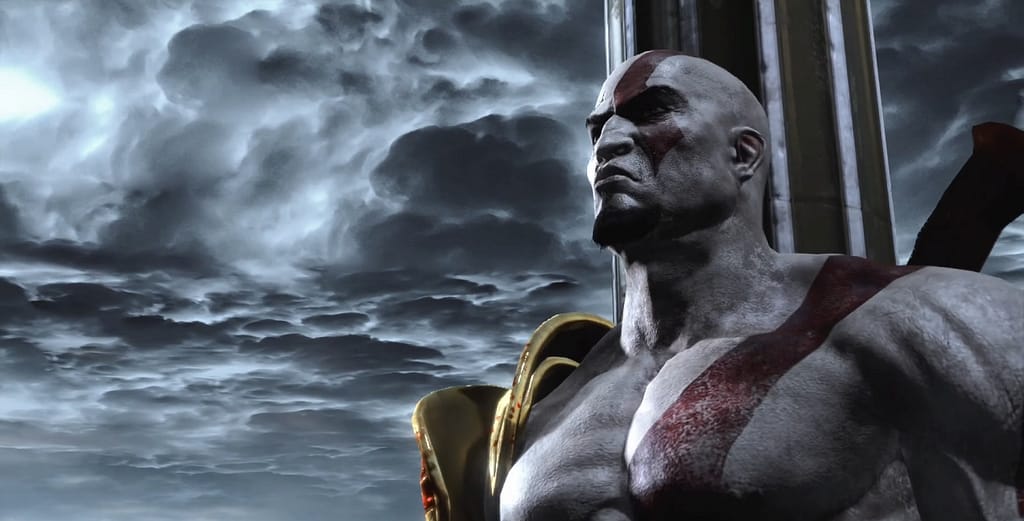
Shortly afterward, I walked the path of God of War 2018 once again, now armed with plenty of newfound knowledge to make the experience —understandably— even more entertaining this second time around! It had become clear as day just how much of a genuine evolution it had been from the original series, helping it not only blow the first trilogy and its spin-offs out of the water, but also blow most of the other games in its year away too, earning eighth place in my top ten games of the year list, all the way back in 2018!
And now, four years later, God of War: Ragnarök has finally been released… Intelligently, Ragnarök doesn’t attempt to redefine the entire series with another huge leap in quality, Opting instead to expand upon this current iteration of the mechanics and themes, fleshing them out into the most polished and well realised ideas that they could possibly become. This is apparent amidst every single second of Ragnarök as an experience, across all its gameplay mechanics, world design, and even the overall way that it develops its narrative.
A good example of this would be how —technically speaking— the combat system does feel the same as it did in the last game, yet thanks to the implementation of several new traversal options and combat mechanics to play around with: It all feels far more refined than ever before. Tossing the Leviathan Axe at a nearby enemy was always a satisfying thing to do, but tossing it at a long-distance enemy and having it continuously strike them as you grapple across the area, slamming down on them from the air with the Chaos Blades, before slowing down time, recalling your axe and cleaving them out of the arena? Well, that’s a whole new level of gratification right there!
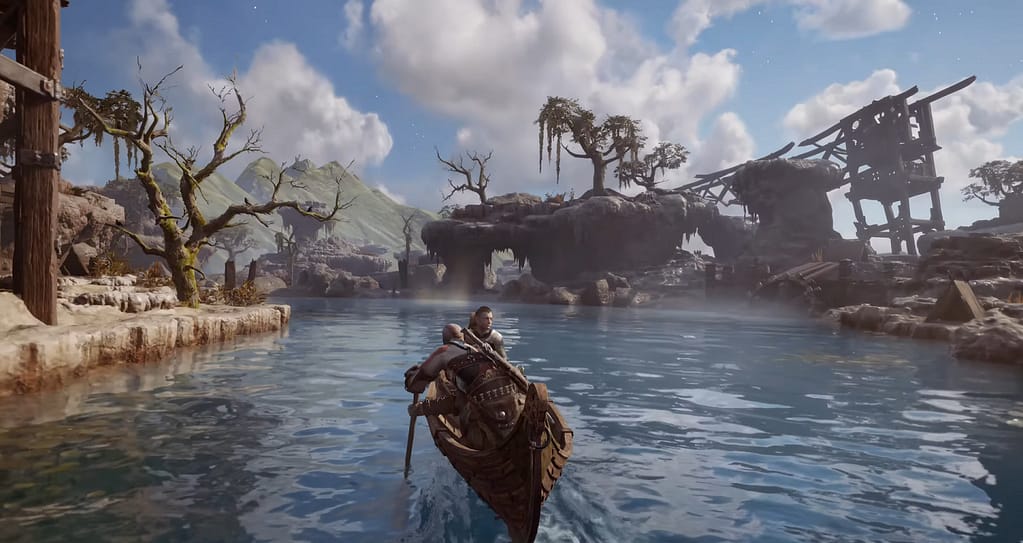
Being able to traverse all nine realms this time around adds a lot of explorative variety to the adventure, too. From the pure lakes and gorgeous architecture of Svartalfheim, through the frozen tundras of Midgard, to the deep jungles of Vanaheim, each realm feels expansive in ways I could never have imagined, even when they have no significant side content to offer. They’re certainly rewarding, but not just in terms of loot; The depth of the lore and the beauty of each region is rewarding enough in its own right, adding even more layers of depth to the quality on offer here.
And my gosh… The main story. Trust me when I say that this is the conclusion that the Norse duology of God of War truly deserved. Each little tale from Mimir, every document you come across, and all the key events that occur throughout… Every single aspect of this story works in tandem with the rest to tie up every loose end so far, thrilling you at every turn with its perfect execution. I don’t think I can recall a single other game where the side content feels like it’s been given every bit as much attention and love as the core narrative!
God of War: Ragnarök really is an epic in every sense of the word. It fulfilled and surpassed all of my expectations, it impressed me at every turn, and it left me unbelievably excited for whatever Santa Monica Studios may be working on next — be it tackling another mythology in the God of War universe or trying something new entirely. Very few gaming companies have earned the level of trust and respect that they have, and with the talent, they’ve demonstrated with this latest masterpiece: It’s safe to say that their future will only get brighter as time goes along.
4 – A Plague Tale: Requiem
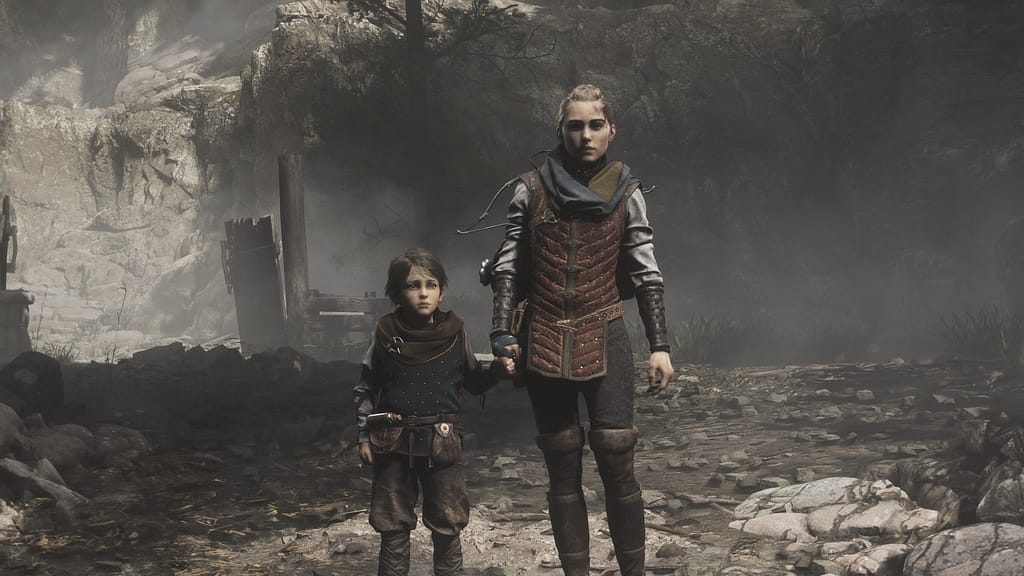
Following on from Asobo Studio’s 2019 hit ‘A Plague Tale: Innocence’, comes a direct sequel that expands upon the original in every single way — A Plague Tale: Requiem. Whilst I received the first game as an unexpected birthday gift way back when, I’d already been eyeing it for quite some time, simply due to the unending praise that critics were giving to its unique graphical effects. Whilst I did find myself impressed by certain animations —namely the terrifying way that masses of rats would swarm over one another— I found this specific praise to be somewhat strange, as the entire game deserved applause, with its graphical effects merely being the tip of the iceberg!
A Plague Tale: Innocence told the heart-wrenching tale of 15-year-old Amicia and 5-year-old Hugo: Two siblings on the run from the French Inquisition in the midst of the Hundred Years’ War. Whilst grounded in the gritty realism of religious warfare and the relentless threat of the plague, Innocence gradually adapted itself into a somewhat supernatural tale of Good versus Evil, but by keeping its authentic themes of childhood purity and parental loss at its forefront, it remained impactful despite this moral simplification.
I’d say it was something of a somber yet hopeful story… Bittersweet, if you will. The two De Rune siblings were pitted against countless arduous trials and tribulations, but Amicia’s goal of protecting her younger brother kept pushing her forwards, shaping her morality in the process. The journey could be deeply oppressive at times in its dark and grisly presentation, yet the positivity that Hugo represented —and the defensive connection that you would develop with him— left most situations feeling sanguine, even at the worst of times. I found it to be rather comparable to the despairs Joel faced throughout the course of The Last of Us, with Ellie being a shining light in the midst of that darkness.
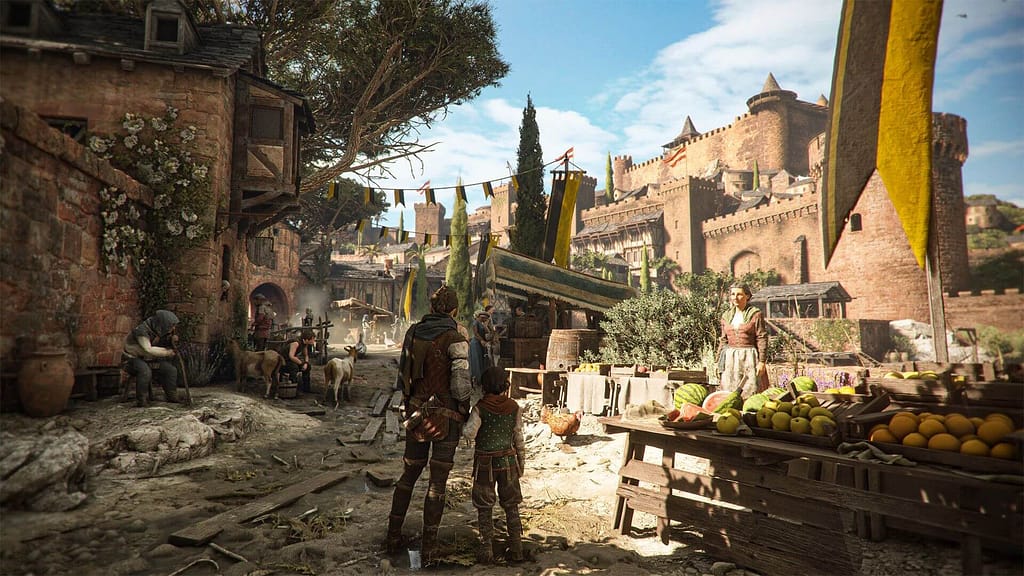
Continuing onwards through the South of France, Requiem picks up Amicia, Hugo and Co’s journey just six months later, within a lull of Hugo’s illness and a brief interval of peace, away from the rats and their plague. It’s a moment, however fleeting, that feels reminiscent of the hopeful note that Innocence had ended on. Unfortunately, the show must go on; This calming respite comes to an abrupt end, and the peril soon begins.
From here, Requiem quickly introduces numerous improvements to its core gameplay. The framework functions in largely the same way as before, with a mix of stealth sequences and combat between the Inquisition and the rats, along with plenty of scavenging and crafting to keep you on your toes. Encounters, however, have been vastly expanded this time around, with far more options for head-on combat, stealthy traversal, and indirect confrontation at each and every turn.
Hugo can be directed with much more precision now, whilst Amicia’s new crossbow and knife combination allows for some far deadlier methods when it comes to dealing with your enemies. Hordes of rats can now be controlled from a much less restrictive first-person perspective, whilst several new companions come equipped with a wide array of unique abilities to vary up the formula. The areas themselves are far less linear, offering more optional exploration that a fan of Innocence may have come to expect, and gear upgrades no longer come at the expense of ammo ingredients, allowing Amicia to feel far more prepared as she approaches each conflict.
There are plenty of other improvements I could talk about here; New skill trees that develop based on how you play, smoother movement, better AI, and the inclusion of several interactions that make the world feel more immersive… It certainly is pleasing to see how much the gameplay has improved, but none of that matters anywhere near as much as the narrative, which has increased in complexity and matured far beyond my expectations.
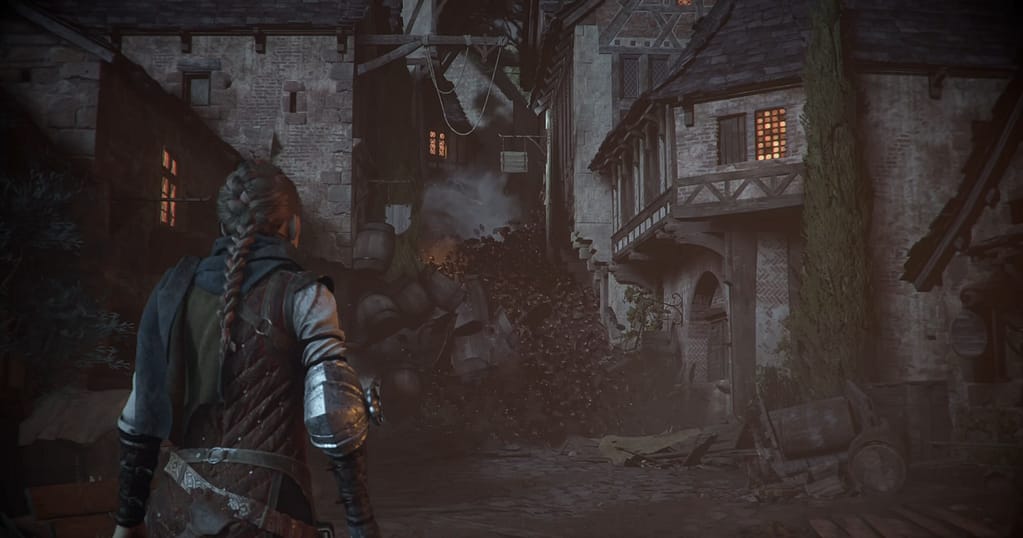
Clocking in at just under 20 hours (the same length of time it took me to complete two full playthroughs of the first game), Requiem is an expansive adventure that offers many layers of depth. It’s an intricate tale with many twists and turns, flipping the script of the original by starting from that hopeful beginning and working its way towards a much darker and more dreadful end-point. In many ways, I found it to be befittingly similar to The Last of Us Part II, dialling up the tragedy and emotional weight behind each scene and amplifying the levels of character development earned by each life-changing moment.
I’d be hard-pressed to find a story from this year that’s meant quite as much to me as the tale of Amicia and Hugo. God of War: Ragnarök came extremely close —impressively so— whilst Martha is Dead felt equally effective, yet nowhere near as significant or meaningful to me… Add to this the incredible voice performances of Charlotte McBurney, Logan Hannan, and Kit Connor, in particular, and you end up with a game that left me completely and utterly speechless.
It goes without saying that I wholeheartedly recommend every single game within my top ten lists, be they from this year or any other. They’re all phenomenal experiences in so many more ways than I could ever hope to list! As a matter of fact: I never feel like I can do them justice or recommend them enough within these brief critiques of mine, no matter how much effort I put in…
But if you’re looking for a game recommendation based on the quality of its narrative in particular, then please: Mark my words when I tell you that it doesn’t get better than A Plague Tale: Requiem, along with its predecessor. This isn’t just one of the best stories I’ve seen — it’s one of the best stories I will ever see.
3 – Neon White
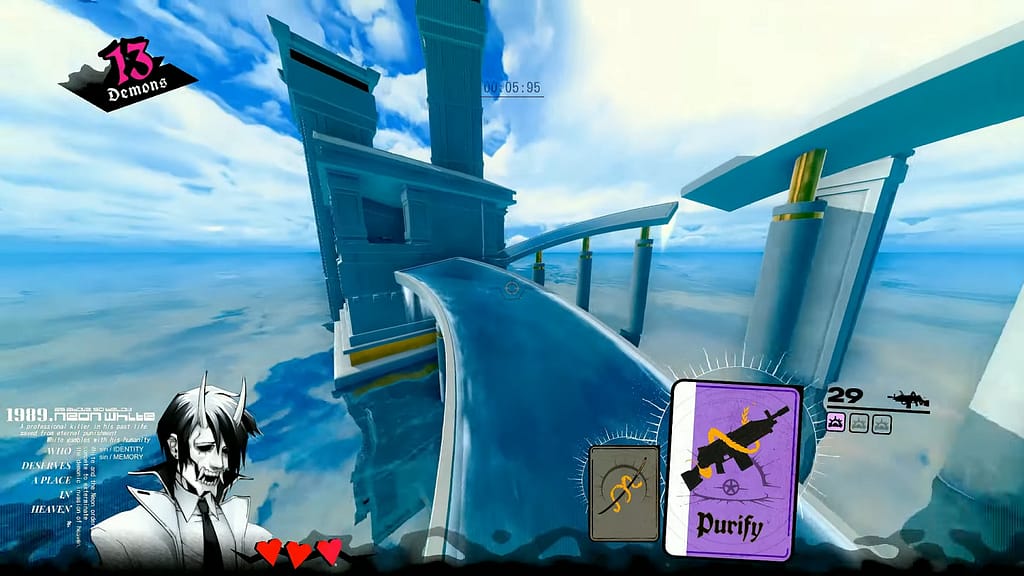
And now for something completely different. I expected Neon White to be an extremely difficult game for me to recommend… I assumed that, upon throwing out terms like speedrunning, anime art style, drum and bass music, leaderboards, extremely difficult, card-based, and platformer: Most people would run for the hills and only look back in order to shout colourful expletives at me!
Yet, to my complete and utter amazement, Neon White —niche though it may have appeared— has been released to near-universal acclaim! Everybody absolutely loves it, and it’s been legitimately pleasing to see; Particularly as it received nominations for a number of awards these past few months, including the prestigious ‘Best Indie’ category over at The Game Awards 2022, which is certainly no small feat! This type of game tends to come and go without much fanfare, fitting comfortably within the label of cult classic but never even approaching this level of mainstream success.
Nevertheless, I still intend to give it my personal seal of approval with as much detail as possible! Neon White is an intensely fast-paced first-person shooter about clearing out demonic entities that have invaded the realm of Heaven. Across 100+ levels, you will sprint through beautiful areas whilst slicing and dicing everything in your path, attempting to reach your goal as quickly as possible. It’s stylish, it feels amazing to play, and it offers boundless levels of satisfaction no matter how you approach it.
For context, Neon White follows the story of an amnesiac assassin named White — one of several killers condemned to Hell who have been chosen to take part in an annual demon-slaying competition. The rules are simple: Kill enough baddies throughout the “Ten Days of Judgement” contest for the stuck-up snobs that preside over Heaven, and perhaps you’ll earn yourself a permanent place by their side, never having to return to Hell again.
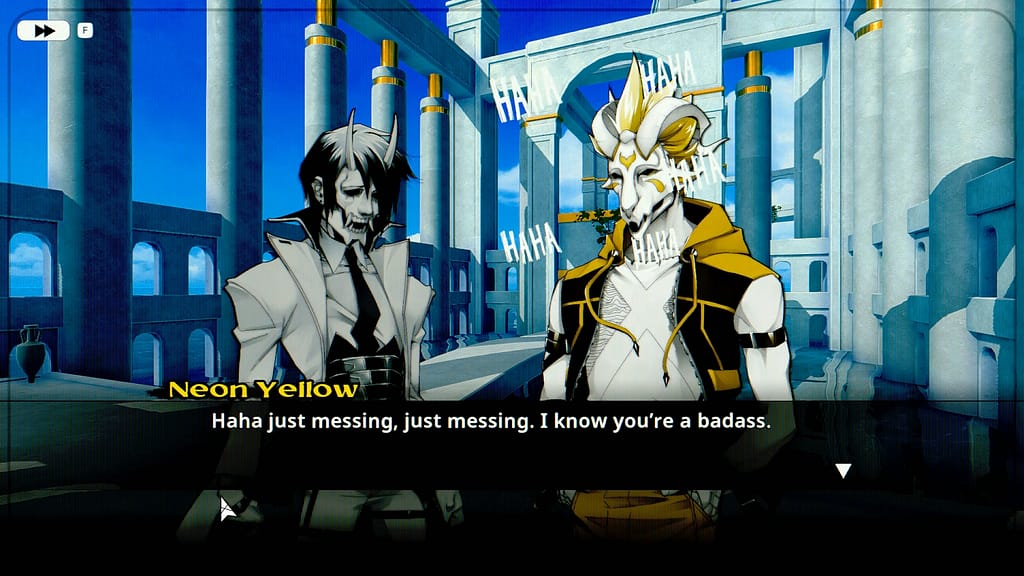
There are plenty of people who will fight alongside White and keep him on his toes — most of whom appear to know him quite well. Friend or foe, though? Who can say… There’s the flirtatious sniper Red, the chilled-out and friendly Yellow, the bloodthirsty yandere Violet, and Neon Green: The mysterious winner of the contest for several years running. There are a few notable angels guiding his way too, including Raz the barkeep, Gabby the secretary and Mike the manager; All of whom appear in the form of cute, cuddly cats to White, whose mind is apparently incapable of perceiving their true forms.
Each of White’s allies and adversaries are filled with personality, whilst the world itself is dripping with charisma on account of its gorgeous artwork and an incredible soundtrack by Machine Girl. It’s a zesty and unpredictable setting that serves as a great backdrop to the core gameplay and keeps you motivated to push against its trials. I spent a little under 19 hours playing Neon White, and I’d happily spend another 100 with it, just to bask in its atmosphere.
As previously mentioned, the objective of each stage is to clear all the demons and reach an end-point as quickly as possible. To that end, each stage has at least two main routes: A quick, straightforward path and a slow, more challenging path. A wide array of shortcuts are scattered amidst both options, however, offering numerous ways to speed up your run. Some are obvious, and some are tremendously well hidden, but any one of them could hide the key to victory.
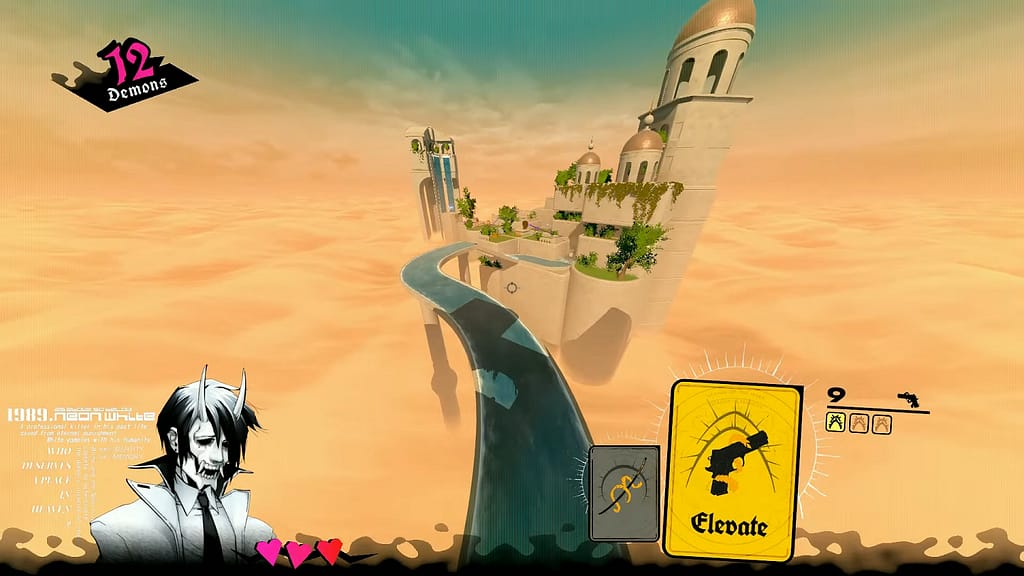
You start each of these stages with a low-damage katana, but you’ll find plenty of weapon cards along the way to help you traverse. All cards offer two distinct functions; You can actively use them in order to shoot projectiles at your enemies, or you can discard them to pull off card-specific parkour techniques. The ‘Elevate’ card, for example, shoots like a typical handgun but can be discarded to perform a double jump. The ‘Godspeed’ card, on the other hand, shoots like a bolt-action rifle but offers a long-range horizontal dash when discarded, whether you’re on the ground or in the air.
This culminates in a deeply complex system that requires lightning-fast reflexes to master! Early on, you’ll find yourself shooting a handful of demons whilst running along, then double jumping to reach your goal. As the well-designed difficulty curve begins to ramp up, however, you’ll be swapping between multiple weapons on the fly in order to quadruple jump through the air before dashing through obstacles, then slamming down to erase your enemies, and even using a grappling hook to get away!
Intelligent, distinguished, fierce, and riveting, Neon White is perfect in both gameplay and story, with enough stylish action to make a Platinum Games title sweat! I truly adore it when an indie game comes out of nowhere and astonishes just about everybody, and Neon White has had that effect ten times over. I’ll be keeping my hopes up for a DLC announcement soon, but in the meantime, I’ll probably be playing the base game again in no time at all!
2 – Grounded
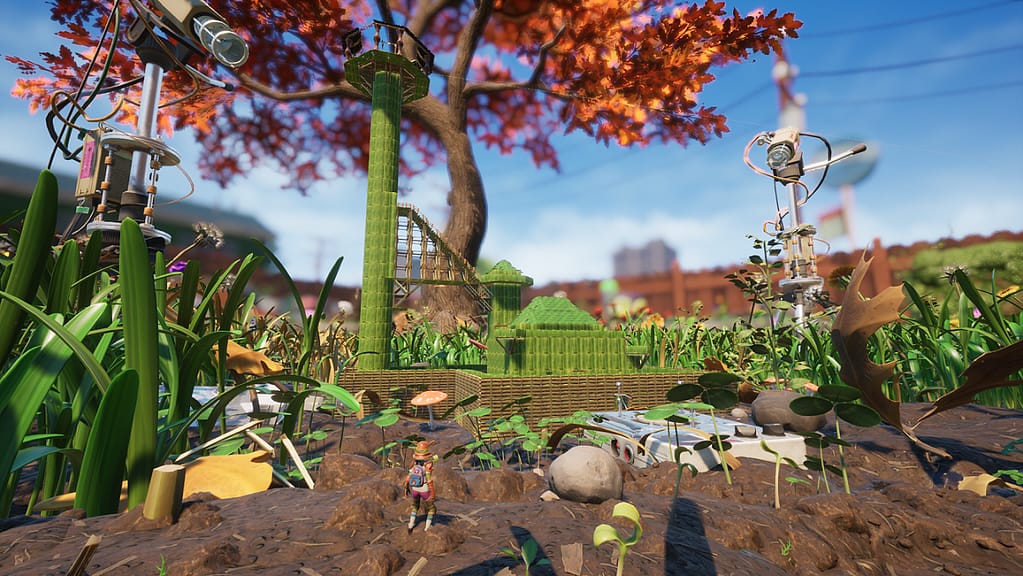
Now, Grounded may come across as an unusual choice for this list to some readers, as —technically speaking— I started playing it in July 2020, when it first entered Early Access! Back then, it was more or less a shell of a game without any significant content on offer. It felt like nothing more than a proof of concept build, but there was just something about it that fascinated me.
Version 0.1.0 was extremely basic. You played as one of four teenagers who had been shrunk down to the size of an ant and let loose in a giant backyard where many perils awaited you. For the most part, it played like any other Early Access survival game on Steam; You gathered ingredients, chucked them at a crafting table to get yourself some gear, built a base, and wandered about aimlessly, seeing what you might find.
There was a story tucked away in there, but only the first two quests could be accessed, serving as the first stepping stone of an adventure without anything to follow up on it. Yet over the years since then, I’ve watched Grounded expand massively, becoming a grand adventure one step at a time. A spider-ridden lab in the midst of an overgrown hedge, a pond the size of an ocean that’s constantly patrolled by a leviathan Koi fish, a leak in a tank of weed killer that hides all manner of infected insects… Bit by bit, the backyard became comparable to a colossal RPG, with all sorts of biomes and baddies to help it feel alive.
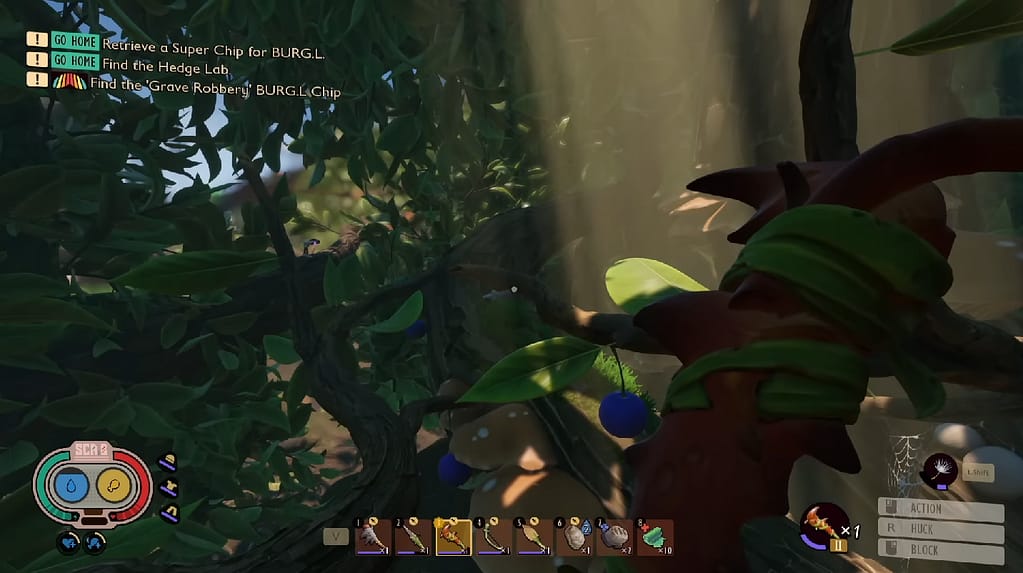
I didn’t play all that much of Grounded at first… I enjoyed the early builds, don’t get me wrong, but something told me that taking a break and waiting for the full release would be far more rewarding. I observed all the new content shown off in each of its trailers, reading spoiler-free summaries of each update log, but opted not to play it again until it finally became a complete experience… Which it finally did, on the 27th of September, earlier this year.
I’ve played 120 hours of Grounded since then and am still far from finished. I’ve braved the wolf spiders’ den, resting beneath the oak tree. I’ve ventured through countless laboratories, enraptured by the main story. I’ve built bases at every key location I’ve found and defended them from the onslaught of dozens of different species. I’ve journeyed through ant hills, termite nests, trash piles, and BBQ spills, overcoming adversity at each and every turn. I may be tiny, but I am the queen of this yard, and nothing shall halt my quest to become big again!
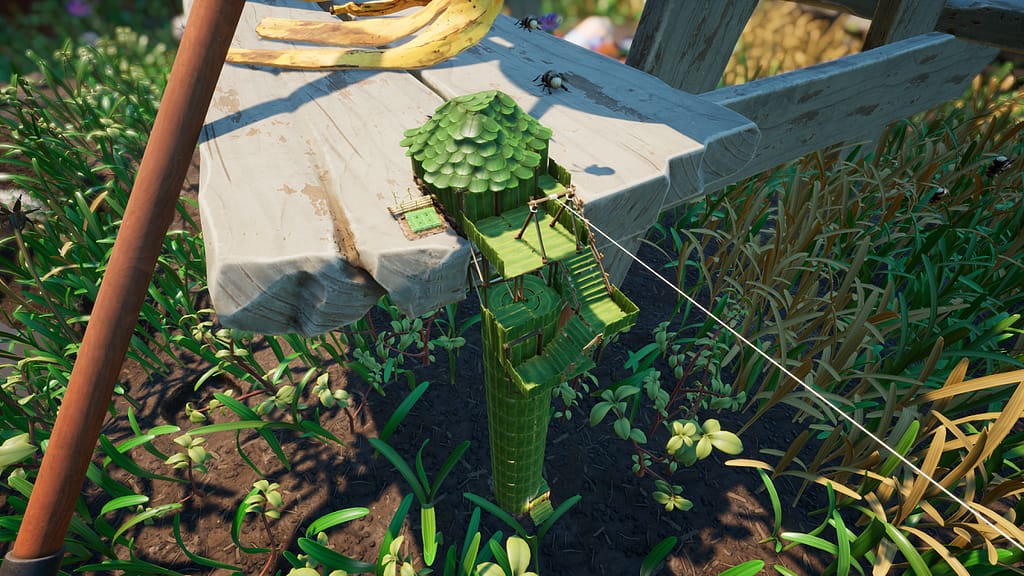
From perks and levelling up, through different tiers of armour and base structures, to plenty of intense combat encounters — Grounded now rivals every single one of Obsidian’s other large-scale adventures. It can feel like a horror game when faced with some of the monstrous bugs that roam the garden, yet it can also feel like a fairy tale at times whilst taking in some of its more colourful biomes. The narrative and lore feel akin to a science fiction epic, but the tone remains upbeat and offers plenty of comedy to keep things light-hearted. Grounded really does feel like it has something for everyone, and has managed to appeal to me within every single genre it has provided.
This tiny escapade has entertained me just as much as any of its life-sized counterparts and continues to impress me every time I boot it up. I may not know what lies in store for Grounded via future updates and teases of DLC, but the base game is so expansive and enthralling that I’ll remain happy no matter what gets added! It’s safe to say that Obsidian have well and truly outdone themselves.
1 – Elden Ring

Well… I mean… Can you really blame me?
Shocking absolutely nobody, SpeakableCassie’s Game of the Year award for 2022 obviously, unequivocally, deservedly goes to the one and only: Elden Ring.
I’ve been a fan of Soulslike games —FromSoftware titles in particular— since I was about 14 years old. I still remember scavenging for good deals in my local GameStation back in late 2011, with only £20 of saved-up pocket money to get myself something good. My girlfriend at the time pointed out a bulky box with some vaguely interesting dark fantasy artwork: Dark Souls – Limited Edition for the PS3, complete with an art book, soundtrack, and behind-the-scenes DVD for the low, low price of £12.99, despite being a very new release.
We picked up the copy and took it home, eager to try it out. I wasn’t particularly impressed by its character creator, but the gorgeous visuals of its CG opening had already enamoured me. I struggled for the better part of an hour to get through the tutorial zone, then floundered for another thirty minutes, attempting to defeat the first boss. My girlfriend commented that it seemed to be far too difficult and that she didn’t particularly like the way that movement and combat felt within the game… We weren’t together for very long after that.
Across the next few months, I endured many hardships throughout the uphill battle of Dark Souls, frequently taking breaks at bonfires in order to swap tips and tricks with my brother Mitch, who had also stepped up to the challenge. Then, after 131 gruelling hours, I finally beat it. “Never again.” I told myself, despite the enjoyment I’d had, but upon finding an even cheaper copy of Demon’s Souls just a few short weeks later: I decided to have my spirit broken just one more time.
I’ve played just about every Soulslike I’ve heard of across the 11 years that have passed since that moment. Dark Souls 2 & 3, Bloodborne, Sekiro, Nioh, Lords of the Fallen, The Surge, Salt and Sanctuary, Code Vein, Jedi: Fallen Order… The list goes on, and on, and on. Between the excessive levels of difficulty, the nigh flawless combat systems, the exquisite aesthetics, and the spellbinding lore: I genuinely didn’t think that the genre could get any better than it already was.
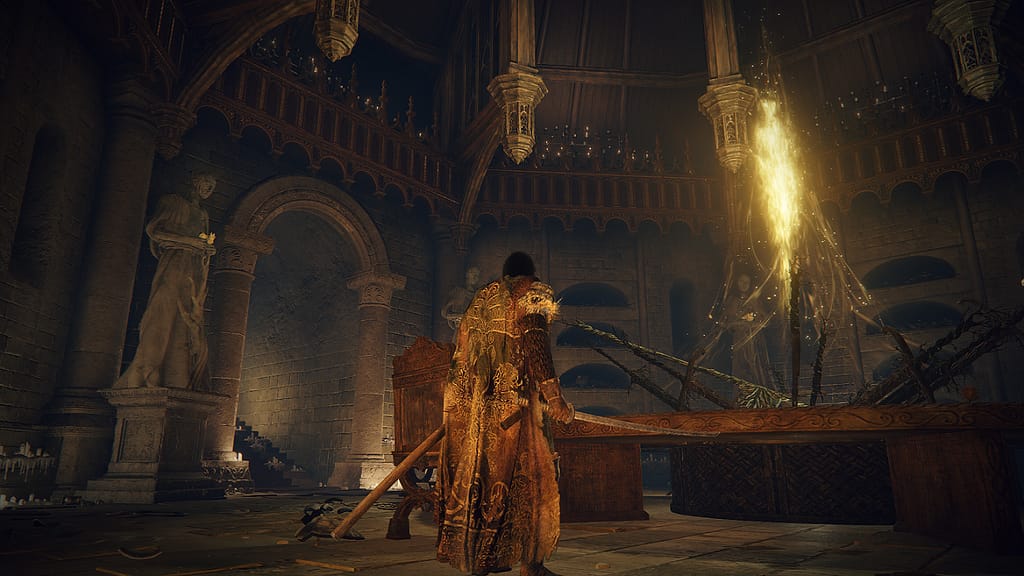
Suddenly, along comes Elden Ring.
Brilliant boss battles, the number of which felt incomprehensible. Whimsical weapons, each one feeling better than the last. Powerful panoramas that always took my breath away. Elden Ring is a Soulslike game with unbelievable scale and detail, completely surpassing just about every gaming experience I’ve ever had, all in a single flawless package.
Whether you’re deciphering the vague and mysterious dialogue of any given character or delving deep into the lore via item descriptions and visual storytelling, Elden Ring’s narrative is always captivating. Be it uncovering the true nature of the Golden Order, searching for the one who stole a fragment of Destined Death, learning the events of the Night of Black Knives, or judging the morality of the Frenzied Flame itself; Hidetaka Miyazaki and George R. R. Martin’s world is never dull. Not even for a moment.
Regardless of which enemy type I was facing or area I was exploring, I always had an outstanding time when playing Elden Ring. I wouldn’t have spent 209 hours doing a single playthrough otherwise! Beset on all sides by Demi-Humans on the shores of Limgrave, slaughtering the Omen that reside in the Subterranean Shunning-Grounds, or facing impossible odds against bosses like Mohg, Lord of Blood. I have so many memories from my time in the Lands Between, and despite the arduous difficulty, every single one of them is pleasant to look back on.
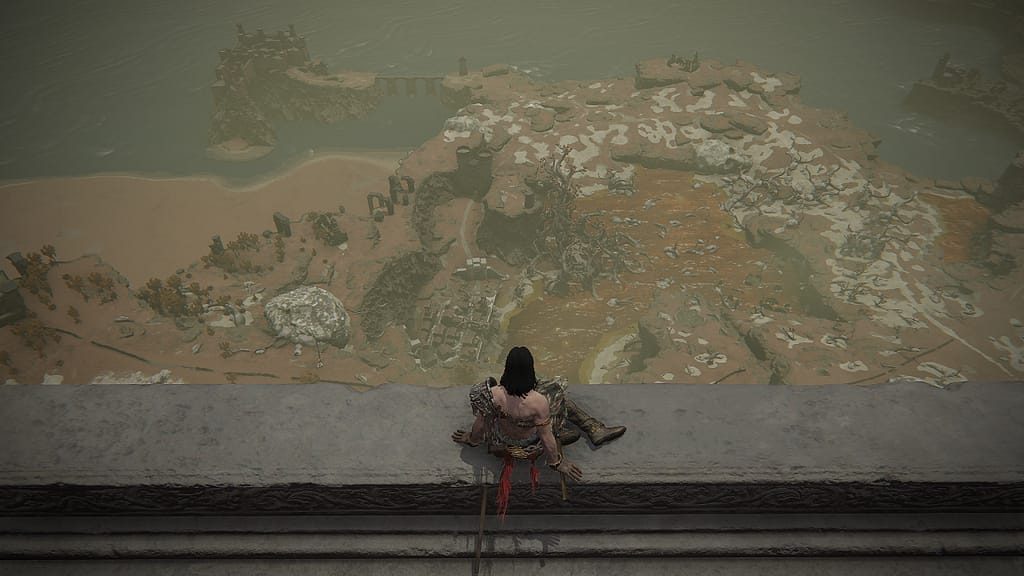
Yes, even when it comes to ‘Malenia, Blade of Miquella’, the boss that is now infamous for being the hardest challenge in the game. I even look back at her with joy, despite requiring 396 separate attempts in order to finally defeat her. You know why? Because what other game would be so enjoyable that I’d sink that much time and effort into beating a completely optional boss, with the fun factor never wavering?
In fact, if you don’t mind spoiling her character design and arena for yourself, you can even see my winning attempt against Malenia in this video right here, in which I use timing, knowledge, and patience to beat her without using any online summons or offline spirits whatsoever. I can honestly say that I have never felt so proud of an accomplishment in gaming before — at least not to the point of recording it as a digital trophy!
What else could I possibly say about this perfect diamond of a game? It’s incredible —perhaps one of the most memorable experiences I’ve ever had, in or out of gaming— and I truly cannot wait until my second playthrough, which I’ll likely be starting any day now. Elden Ring has won my Game of the Year award and has also undoubtedly earned a place among my top ten favourite games of all time!
So… Here’s to you, FromSoft. You deserve it.
Conclusion
And there we have it. I could never have imagined that 2022 would offer so many mind-blowing gaming experiences, especially after the difficulties of the pandemic that we’ve all been dealing with these past few years. Yet so many development teams stood tall and flourished this year in spite of those struggles, and I couldn’t be more grateful to each and every one of them.
In the mood for more Game of the Year content? Then be sure to check out some of the other excellent lists here at SassyGamers! Namely, check out TheThousandScar, who has been working tirelessly to bring you articles on his own top ten games of the year, alongside a thorough list of hidden gems you may have missed, and some excellent picks for the best Early Access titles, which you should definitely keep an eye on!
Otherwise, thank you.
Thank you so, so much for coming on this journey with me. I hope you’ve had a wonderful year, and I look forward to writing about so many more amazing titles in the new horizons of 2023.
‘Till next time.